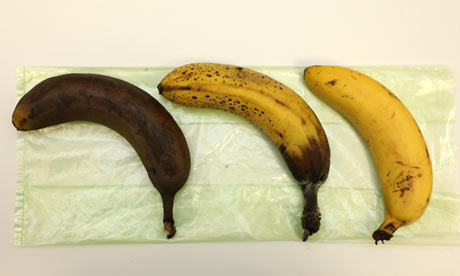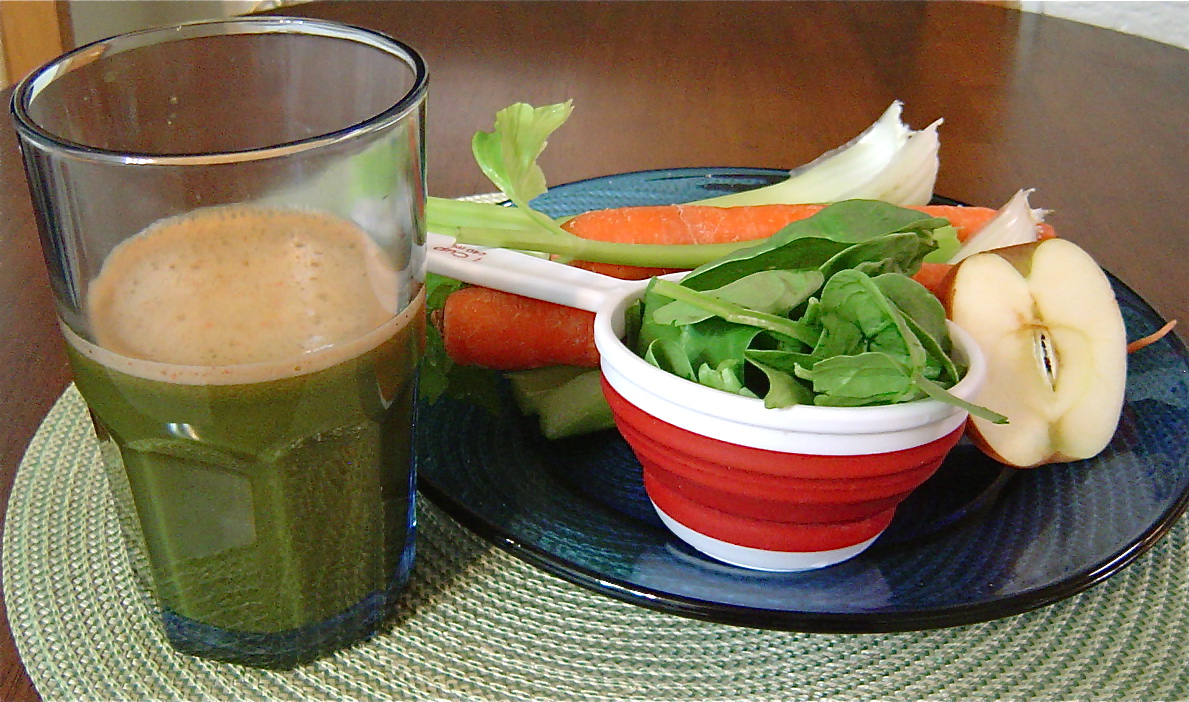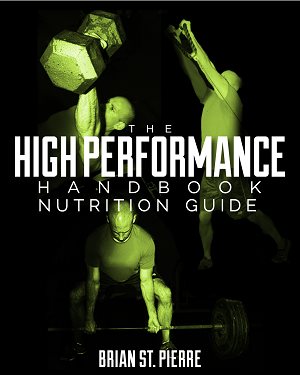Filed under: General Health, Nutrition, Training
Strength Training Programs: The 7 Most Common Power Clean Technique Mistakes - by Wil Fleming. This was a guest post on Eric Cressey’s blog that I thought was excellent. Wil addresses seven common technique mistakes of the clean (probably the most butchered exercise in history, and that is saying a lot!) in an easily understood manner, along with some helpful videos.
Q & A: Fixing the “Tuck Under” When Squatting Part 1 & Part 2 – by Tony Gentilcore. Having the pelvis tuck under when squatting is an incredibly common problem in the gym (when people are actually squatting to depth). Tony does a great job of outlaying what the problem is and some solid, but simple techniques to fix it.
Doctor Detective with Bryan Walsh. This is a running series over at Precision Nutrition, and I just find them simply fascinating. Bryan Walsh is an uber brilliant dude, and in this particular case is able to identify what is causing this patient’s thyroid, cholesterol and immune system problems.
Filed under: General Health, Nutrition
In today’s piece I wanted to give a nice little tip on fruit preservation – specifically bananas. Bananas are one of my favorite fruits. Apparently when I was wee little lad I used to stand up in my crib and yell “nanas” over and over to my mom until she fed me some bananas, and that love affair has never ended. However, unlike most foods, I am rather particular about my bananas; I like them a little green, and once they are spotted brown I simply won’t eat it. Fortunately there is way to keep bananas at their desired state of ripeness far longer than you might think possible.

Normally bananas are kept in a fruit bowl or hanging from a rack. While this is fine, if you are like me and really prefer your bananas at certain point in time, then that is far from optimal as they brown quickly. This leads to bananas simply going uneaten, and I hate wasting food. A far superior method is to actually keep your bananas in the refrigerator!

Once bananas have reached your desired level of ripeness, simply place them in the fridge in your fruit drawer and they will remain at that state for nearly a week! The peels themselves will change plenty, turning brown and kinda nasty looking, but the fruit itself hardly changes, preserving that delicious flavor. Try it out and let me know how it goes!
Filed under: General Health, Nutrition
I hope you all enjoyed my recent post Today’s Health Tip as I am planning on making that a new weekly feature on the site. As much as I like writing more in-depth articles, sometimes all I have time for, and all you want to read, are quick and readily applicable tips you can incorporate into your daily lives.
Continuing in the theme of that post I want to quickly discuss a topic that I touched upon earlier, that of genetically engineered food. As discussed a few days ago when produce is genetically engineered it will have a PLU code starting with the number 8, however do any of us actually want genetically engineered food? I know I don’t, but unfortunately it is around for the time being. If it is going to be around, I certainly want to know if the food I am purchasing has genetically modified ingredients, because at the moment food companies do not have to provide that information.

Fortunately the Environmental Working Group is trying to change that, with the Just Label It campaign. They have a petition that you can sign right online that is being sent to the FDA. They currently have 84,000 signatures with a goal of 100,000. The deadline is March 27, so if you want food companies to tell you if they use genetically modified or engineered food in their products, this is your chance to let them know.
—> Click here to sign the Just Label It petition <—
Just for example to let you know how prevalent this is, in 2010 the National Agricultural Statistics Board annual report stated that 93% (93%!) of soybeans produced in the US are genetically modified, specifically Monsanto’s Roundup Ready soybean. Just an FYI, Monsanto is a chemical company (they make Roundup), not a food company and they own patents on the genes of more than 93% of soybeans, 80% of corn, and 95% of sugar beets planted in the U.S. — all genetically modified to be resistant to their weed killer Roundup. Gross.

These particular soybeans have been linked to infertility in hamsters, early death in rats, organ dysfunction in rats and more. If GMO crops are in there, I want to know. I don’t want to feed them to myself, my wife, or especially my daughter. Sign the petition to force companies to simply tell you if they use GMO crops or not, it is that simple.
Filed under: General Health, Nutrition
I am currently in the midst of reading Healthy Child, Healthy World: Creating a Cleaner, Greener, Safer Home. In it I came across a nice little tidbit that I had heard once before but had forgotten all about. When shopping for produce sometimes it can be difficult to tell if it is organically or conventionally grown, and it is almost impossible to know if it is genetically modified. Well here is a little trick that can give you all of that information – the PLU code on the sticker.

Conventionally grown produce has a four-digit code, such as 3577, while organic produce has a five digit code that begins with a 9 (such as 93577). Genetically modified produce also has a five digit code and will begin with an 8 (such as 83577). Nice to know huh?

Bonus Tip – This spring and summer my goal is to increase my local food consumption. My wife and I get local eggs, butter, yogurt, corn, strawberries and a little more while the Farmer’s Markets are open here in Maine. I want to expand that and greatly increase my local produce consumption this year. With that in mind I am going to utilize a website called eattheseasons.com to let me know which foods are in season each week and month. Check it out yourself.
Filed under: General Health
Hi Brian,
I was curious to know your opinion/ advice on the whole aluminum in grooming products and its effect on our bodies. Also, I try to follow your recommendation for avoiding products with fragrance and would like to know which grooming products, shampoo, soap, etc. you use?
This question was in response to my recent post One More Reason to Go Green, and Do Your Research, and it is a good one. To be completely honest I haven’t really looked into the whole aluminum in grooming products thing thoroughly, though it is certainly on my agenda! As much I would love to address this here, after some initial digging it requires more research on my part to give a solid answer, if one can even be given. My initial glance hasn’t found the data convincing in either direction.

As for grooming products such as soap, I personally use Dove Sensitive Skin Unscented, as it is fragrance free. Many of the chemicals in grooming products go far, far beyond my limited expertise in the area so I would love it if others could chip in with evidence-based thoughts on the topic.
In general I tend to err on the side of caution and believe in the “better safe than sorry” approach, however it is also important to keep in mind that “the poison is in the dose.” Meaning that occasional exposure to many potentially harmful things is often not something to concern yourself with (unless it is something like airborne asbestos) simply because the amount of exposure is far below what is necessary to cause harm.

Some things that I use around the home that I consider worth it are Seventh Generation hand soaps. We usually go with the Just Clean option, though they do have some that are scented with essential oils (not “fragrance”), I just find that they seem to dry my hands out a little. We also use their Free & Clear dishwashing soap. I steer clear of anti-bacterial soaps as much as I can as triclosan is considered carcinogenic, which is the same reason we do not use Colgate Total toothpaste as that is it’s active ingredient.
Fore more information on healthier products, check out The Environmental Working Group’s Skin Deep Cosmetic Database with more than 69,000 products rated for their safety. For example my soap above gets a score of 2, which is very good.
Filed under: General Health, Nutrition, Training
Well I am back from sunny Florida, and fortunately it was nearly 7o here in Maine yesterday so that was nice to return to! I mentioned the other day that I was able to get some reading done while on the beach that I had been meaning to get to for a long time. One such book was sent to me by a reader that I have been meaning to read for a while, Biology for Bodybuilders.

In this book Doug Miller, a champion drug-free bodybuilder, shares his nutrition strategies and the science behind them that have helped him be so successful. Overall I think this book is a nice look into the mindset of someone who has achieved such an incredible physique, and while I don’t agree with all of his strategies Doug does a good job of repeatedly mentioning that this is what works for him and what works for you may be different.
One particular piece in the book really struck me, and probably not even something that occurred to him, was when Doug mentioned that he sticks to an eating routine (something I have blogged about before), and he does so not only to keep things simple, but to decrease the stress in his life. He has a stressful job and trains hard, so eating mostly the same things everyday is not only practical from a time management standpoint (something else I have written about, here and here) he also views it as a strategy to decrease stress in his life. This was not an angle I had considered before, but when I read it it just struck me as incredibly true.
When you have a healthy eating routine you don’t have to worry and stress over what you are making, what you need to buy, etc. It just one more way to remove a potentially stressful situation from your life. We make hundreds of decisions every day related to food, so by having a routine you make the majority of these decisions ahead of time. This was one of those aha moments when you are reading a book that you are just amazed at how simple it is, and can’t believe you didn’t think of it yourself. Biology for Bodybuilders is a nice look into Doug’s mindset and definitely worth a read.
Filed under: General Health
Though I am still on vacation I wanted to quickly touch on an article I came across while reading the news this morning. It was a piece on aol.com called It’s Not Easy Breathing Green, and it brought up some interesting information on a recently conducted study.
The researchers at Silent Spring looked at 42 conventional products and 43 “green” products to determine their chemical content and whether they contain compounds that are known hormone disruptors (which may affect cancer risk, growth, and reproduction) as well as triggers for asthma. All 42 conventional products contained potentially harmful chemicals, and 32 of the 43 “green” products did as well. Interestingly many of these compounds were not listed on the ingredients label.
They found the highest concentrations in vinyl products, such as shower curtains and pillow protectors, and fragranced products, such as dryer sheets, and sunscreens. Recall how I recently blogged about the term “fragrance” on bottles can be as many as 200 different chemicals which the companies do not have to specify.
Silent Spring Institute’s earlier research, as well as the Centers for Disease Control’s biomonitoring studies, have found many of the study chemicals in people’s homes and bodies. Now this study adds information about where the exposures are coming from in everyday products.
Here are the tips the researchers recommend to reduce your exposure:
- Using fewer products
- Exercising caution with products applied directly to the skin and products used indoors, where chemicals accumulate in the air and dust
- Avoiding vinyl products, products containing fragrances, and anti-bacterials (triclosan and triclocarban)
- Using soap and water for cleaning
- Getting involved in local and national efforts to modernize chemical safety testing to keep harmful chemicals out of products in the first place.

I would like to add to that a bit to make it a little more applicable. For example I am currently in sunny Florida, and after doing some research on the Environmental Working Group’s exhaustive Sunscreen Guide, purchased BurnOut Ocean-Tested Physical Sunscreen SPF 30+. It has been fantastic. It is a pure physical sunscreen without any chemical UV absorbers. It is paraben-free, phthalate-free, fragrance-free, petroleum-free, biodegradable and ocean safe. Not too mention that is has worked incredibly well, goes on smooth without leaving a chalky white residue (like many zinc oxide products) and has kept my wife and I sunburn free.
Avoiding products with the term fragrance is pretty easy and will be a big part of keeping your indoor air as well as your skin clear of harmful chemicals.
For further reading check out these other posts:
Dangerous Dryer Sheets
The Dangers & Solutions of Indoor Air Pollution
How to Use Less Plastic
Should You Filter Your Drinking Water?
President’s Cancer Panel Report
EPA Building List of Potentially Dangerous Chemicals
Filed under: General Health, Nutrition
I apologize for the lack of posts, but I am currently on vacation in sunny Florida. A reader and former client of mine at CP sent me an article that I think will interest many of you titled Is Diet Soda Addictive?
This vacation has been wonderfully relaxing and I have been able to finish some books that I have been working on for a very long time. I haven’t been able to read so much in years!
I promise some actual content upon my return.
Filed under: General Health, Nutrition
Recently quite a few fitness experts have espoused the benefits of juicing. While I do agree that it can be a good way to increase your produce consumption, if not done correctly it can end up just being an increase in sugar intake with much of the benefits of produce consumption conspicuously absent.
If you are using a juicer that removes the pulp of the fruit or vegetable then you are missing out on the benefits of the entire food – the fiber, some vitamins and minerals and even much of the phytonutrients and antioxidants – while giving you a more concentrated sugar intake. In my opinion that is not a winning combination.

If you are going to juice produce I would recommend using something like a Vitamix or other high-powered blender that will completely liquify the entire produce so you aren’t just getting the juice and sugar. In addition if you are simply blending the entire thing for added produce to your meals then that is totally cool as long as you keep the calorie content in check. If you are doing this as a meal replacement then I would certainly encourage you to add a quality protein and some healthy fats and not do so for more than 1 meal per day, 2 at most on a day where you need something quick.
In the end even if you are blending the entire fruit and/or vegetable, juicing is not the be all end all, it is simply a nice adjunct to a balanced diet based on real, whole, minimally-processed plant and animal foods.
Filed under: General Health, Nutrition
In the past I have written about protein bars that I think are an acceptable part of your dietary intake from time to time. These would include JayBars, YouBars and VPX Zero Impact Bars. Well a client referred me to a new bar on the market that I tested myself and thought was quite good – Quest All-Natural Protein Bars.
They are higher in protein than either the JayBars or Youbars, contain no artificial sweeteners and is made from mostly real foods. Not to mention they taste pretty good to boot!

They are sweetened with stevia, Lo Han Guo and erythritol. Now some of you may have noticed that erythritol is a sugar alcohol, and that makes many people nervous. Fortunately erythritol is different from most sugar alcohols. Rather than the usual 2.4kcal/g of sugar alcohols it only supplies 0.2kcal/g. In addition 90% of it is absorbed by the small intestine and is excreted in the urine and feces, so the majority of it does not pass to the colon and cause GI upset (ie – diarrhea) like most sugar alcohols.
Lo Han Guo is another natural sweetener, actually a fruit from China, and is 300 times sweeter than sugar. Due to its high level of sweetness less is needed so it makes a lower-calorie option. It has been used for approximately 1000 years in China for a multitude of purposes.
In addition the bars contain 17g of fiber, mostly from isomalto-oligosaccharides (IMO), a prebiotic fiber. While those 17g may scare you away and think you will get a ton of gas, or the prebiotic fiber part may cause the same fear (as the prebiotic inulin is certainly known to cause gas in some people), fortunately for you this prebiotic is a different beast than inulin and is known to cause little gas. IMO naturally occurs in honey, miso and soy sauce and it also provides a level of sweetness for the bar as well. It is digestion resistant and passes into the colon where it is fermented by Bifidobacterium (healthy bacteria), producing short-chain fatty acids, decreasing luminal pH, and inhibiting the growth of dangerous bacteria.

Having said all of these wonderful things about these bars, and I didn’t even mention the benefits of its whey protein, I would not recommend consuming this bar or any other on a daily basis. In my mind protein bars should be used only when needed, not as an intentional part of your daily intake, as you are always better off with a completely real food meal. However they work great when you are caught in a pinch or have to eat on the road. They travel well, provide quality protein, healthy fats and are made from quality ingredients. Have a bar with a piece of fruit and some nuts and you have a very tasty and high-quality snack.
















Posted on March 28th, 2012 by Brian St. Pierre
No Comments »